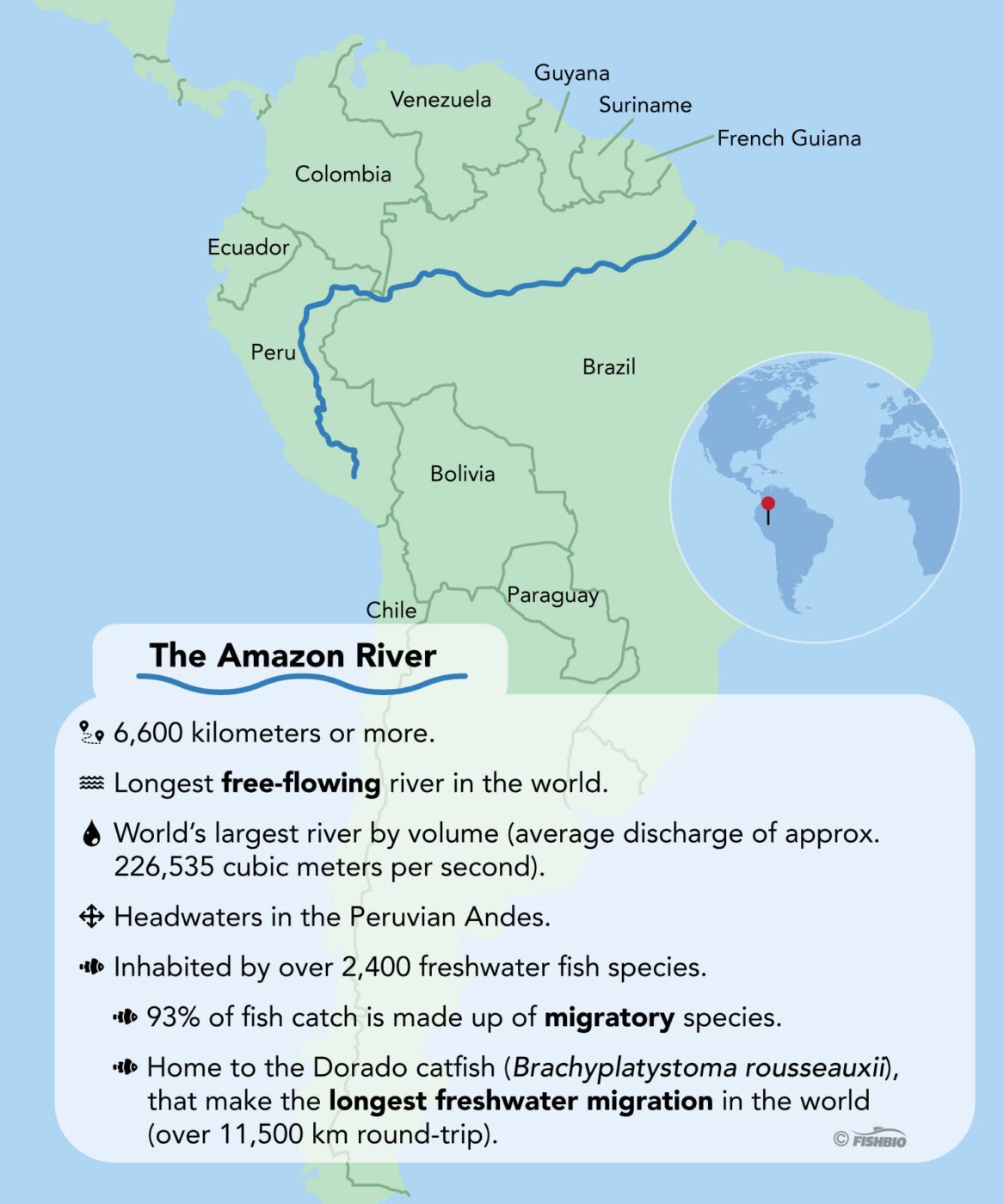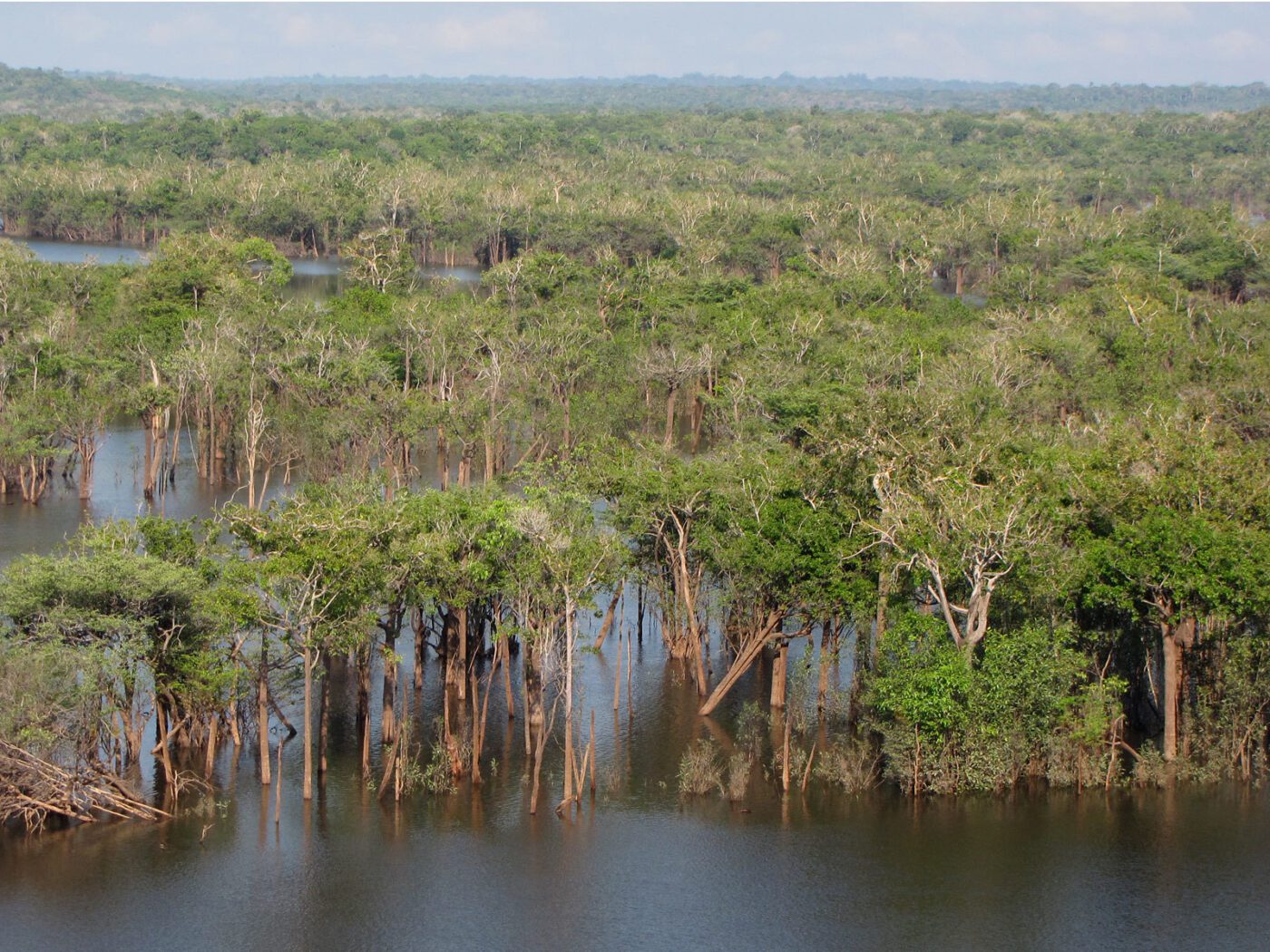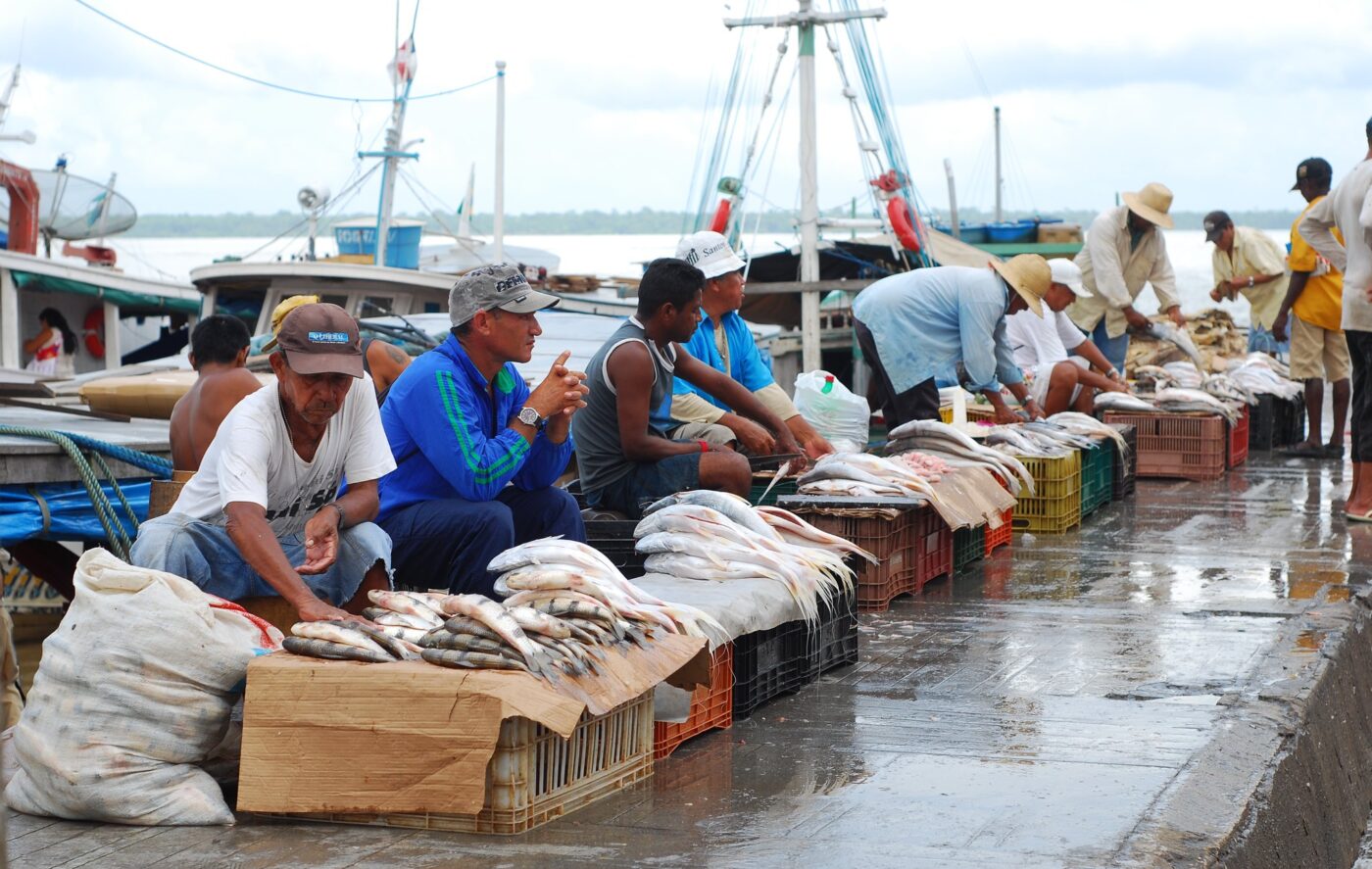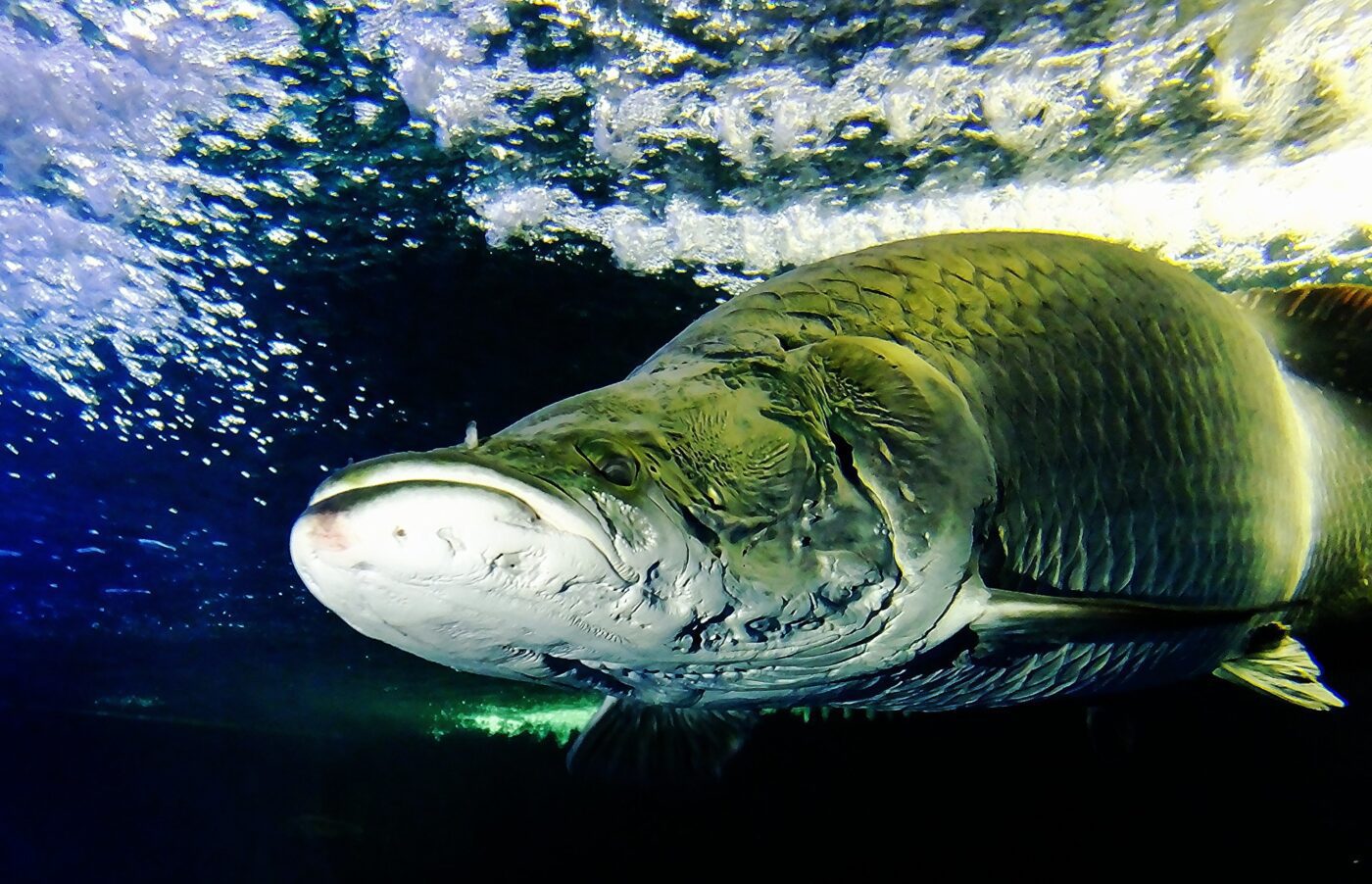Tuesday May 28, 2024

In terms of sheer volume of water, the Amazon River of South America holds the title for largest river on Earth. Over the roughly 4,000 miles (~6,600 km) it travels from the headwaters of the Peruvian Andes Mountains to the Atlantic Ocean, it carries about eight million cubic feet (~230,000 cubic meters) per second of water, on average. These mighty waters are the lifeblood of the region, weaving through a mosaic of unique ecosystems and fishing cultures, and nourishing the largest, most diverse rainforest on Earth. Under the Amazon river’s surface there are over 2,400 species of fish, over 7% of which are migratory species that rely on uninterrupted channels to carry out complex life histories. Fortunately, the incredible volume of discharge – which is greater than the next seven largest rivers in the world combined – flows unobstructed through much of the basin. While many of its smaller tributaries are dammed, the mainstem Amazon remains unfragmented by hydroelectric facilities, standing its ground as one of the world’s last few wild rivers.

Map of the Amazon River.
In tributary basins of the Amazon river, there are upwards of 150 dams in operation that provide the benefit of electricity to people living there, yet at the same time present major threats to one of the most unique freshwater ecosystems on the planet. Dams not only block migrating fish from the tributaries, but also invite a slew of downstream environmental effects, including the reduction of vital floodplain formation and associated carbon storage, obstruction of nutrient-rich sediment transport, and fragmentation of protected areas. Human’s in the region also rely on free-flowing waterways – researchers have found that dam construction in Amazon tributaries impedes river navigation, fractures indigenous cultures, inhibits floodplain agriculture, and reduces habitat and food resources for freshwater fish, which can decrease subsistence fish catch. Free and clear access throughout the Amazon River system is imperative, especially for freshwater fish that traverse the better part of the South American continent as they mature and spawn throughout their life cycle.

Flooded forest in the Rio Urubu, a tributary of the Amazon. Photo by Katja Schultz.
Fish perform a variety of unique potamodromous – or, entirely freshwater – migrations in the Amazon, with some moving long distances up and down the river channel, and others moving laterally into flooded areas in the wet season. In fact, the Amazon is home to the world champ of long-distance migration: the Dorado, or golden catfish (Brachyplatystoma rousseauxii), a catfish from the order Siluriformes. This giant species, which grows up to six feet long and can weigh over 200 pounds, makes a 7,200-mile (~11,600-km) round-trip from Andean headwaters to the Brazilian estuary and back. Smaller bodied fish part of the order Characiformes – from pugnacious piranha to gentle pacu – often undergo short-range migrations, moving laterally between the main channel and its periphery floodplain habitats and traveling up to few hundred miles at most. Largely detritivores and frugivores that feed on dead organic matter, fruit and seeds, these migratory fish species contribute to the health of surrounding forest and floodplain ecosystems by providing nutrient cycling and seed dispersal throughout the system. Species belonging to Siluriformes and Characiformes together account for the bulk of fish contributing to the recreational and commercial fishing economy in the Amazon region, with the latter alone comprising over 30% of total fish yield in the basin. As such, preservation of free-flowing waters is critical to allowing these species and the fisheries that target them to thrive.

Fishers sell their catch in Belem, Brazil. Photo by Celine Massa.
For the 29 million people – an estimated 1.5 million of which are indigenous – who call the Amazon Basin home, fish are the single most important protein source, making sustainable freshwater fisheries the cornerstone of human culture in the region. Species like piraracu (Arapaima gigas), a gigantic and ancient megafish, have been a crucial dietary staple among indigenous people for centuries. Beginning in the 1960’s, their populations started dwindling, and by the 2000’s had disappeared in many areas as a result of commercial overharvest, until indigenous people began establishing community based management (CBM). Local agreements were created, enforcing strict fishing quotas and designating protected zones. By including local people and their wealth of ecological knowledge in the monitoring and conservation of the species, piraracu population sizes have increased over 200% in these protected areas – not only preserving, but improving a critical food and revenue source.

A piaracu (Arapaima gigas). Photo by muzina_shaghai.
The story of the piraracu’s brush with the brink of extinction is all too familiar. However, community-driven approaches are gaining momentum, and have been critically important for protecting and recovering other species threatened by overfishing or dam development. To preserve environmentally, culturally, and economically important resources like fish, the most effective action includes not just protecting freshwater habitats, but also the ability for species to move among them. Safeguarding the ecological connectivity of the world’s largest free flowing river will be critical in ensuring the security of the Amazon’s essential ecological services into the future.
Header Image: The sediment plume at the mouth of the Amazon River covers thousands of kilometers in the Atlantic Ocean. Photo from the European Space Agency’s Copernicus Sentinel-3 satellite, processed by Niklas Jordan.
This post is part of our Wild Rivers series, highlighting the world’s last remaining undammed and free flowing rivers in celebration of World Fish Migration Day. Learn more at fishbio.com/category/wild-rivers
